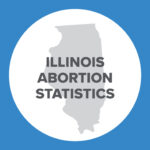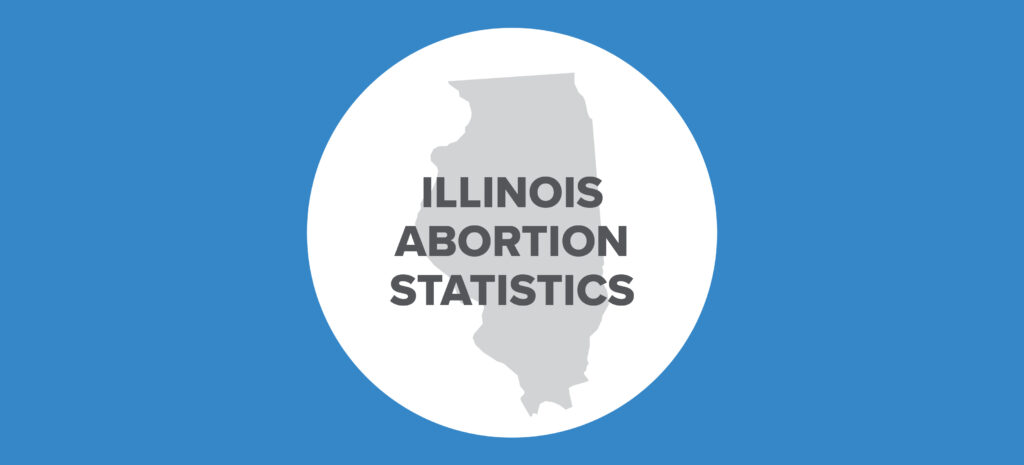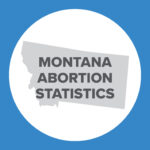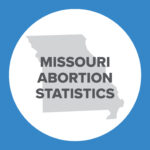Abortion Reporting: Colorado (2022)
Colorado’s 2022 abortion report was provided to Charlotte Lozier Institute (CLI) upon request by the Colorado Department of Public Health and Environment in July 2023. The report shows that abortions increased from 2021.
Statistics and Changes in Colorado Abortions, 2021-2022

The abortion report does not include information on Planned Parenthood’s Colorado abortion market share.
Abortion Totals and Trends
There were 14,154 abortions in Colorado in 2022, up 22 percent from the previous year and the highest total in the state since 1985. Chemical abortions rose to 8,832 in 2022, an increase of 19 percent and constituting 62 percent of the total (Fig. 1). CLI estimates that Colorado’s state abortion rate was 11.8 abortions per 1,000 women ages 15 to 44, an increase of 22 percent from 2021 (Fig. 2).1 As of August 2023, 17 states have released 2022 abortion statistics, with 12 states showing that abortions had increased from the previous year.
State Report Summary
In 2022, 72 percent of the abortions reported in Colorado were performed on state residents, while 28 percent were obtained by women from other states, including 17 percent on women from Texas. The number of abortions in Colorado obtained by out-of-state women increased by 152 percent from 2021, with surges in Texas, Oklahoma, and Kansas women obtaining abortions in Colorado in 2022. Not quite one percent of Colorado abortions were performed on women whose state of residence was not reported.
A potential explanation for the surge in out-of-state women obtaining abortions in Colorado was the overturn of Roe v. Wade in June 2022. Some of the states that saw huge increases in the number of resident women who traveled to Colorado for abortion (Texas and Oklahoma) had strong protections for the unborn throughout pregnancy go into effect following the overturn of Roe.
Ten percent of the abortions reported in Colorado were performed on girls under the age of 20, including three percent on girls under the age of 18. Thirty-one percent were obtained by women ages 20 to 24, and 27 percent were on women ages 25 to 29. Twenty-eight percent were performed on women in their thirties, and three percent were on women ages 40 and older.
The largest share of reported abortions were performed on non-Hispanic white women (43 percent). Two percent were performed on white Hispanic women, and 10 percent were performed on black women; the report does not differentiate between abortions performed on Hispanic and non-Hispanic black women. Six percent of Colorado abortions were reportedly performed on women of other races. However, race was not reported for 38 percent of the abortions. Alarmingly, the black abortion rate of 24.8 abortions per 1,000 women ages 15 to 44 was three times the non-Hispanic white abortion rate of 8.1.
Over three-quarters of the abortions (77 percent) were performed on unmarried women. Sixteen percent were on married women, and seven percent on women of unknown marital status. Seventy-two percent of Colorado abortions were performed on women who reported no previous abortions. A fifth were on women with one prior abortion, and eight percent were on women with two or more previous abortions. Sixty percent of the abortions were obtained by women with no living children, compared to 17 percent on women with one child and 23 percent on women with two or more children. The number of previous abortions and number of previous living children were reported for all but 0.2 percent.
Chemical abortions made up nearly two-thirds (62 percent) of all abortions reported in Colorado. Just under one quarter (24 percent) were suction curettage procedures, and four percent were performed via dilation and evacuation. Two percent of abortions were performed using unreported methods, while the numbers of intrauterine instillation, sharp curettage, and hysterotomy/hysterectomy abortions were suppressed because they were small. Seven percent of the abortions were performed using an unknown method.
The vast majority of Colorado abortions (92 percent) occurred in doctor’s offices. Just 0.1 percent were performed in hospitals. However, the type of facility was not reported for eight percent of the abortions. Just under two-thirds of the abortions were performed at eight weeks of gestation (approximately six weeks post-fertilization) or earlier. Sixteen percent occurred between nine and 10 weeks of gestation, while six percent were performed between 11 and 12 weeks. Four percent were reported between 13 and 15 weeks, and five percent were performed between 16 and 20 weeks of gestation. There were 487 abortions at 21 weeks of gestation or later, well past the time when babies can feel pain, a disturbing increase of 186 percent from 2021. Abortions at 21 weeks or later composed over three percent of the total in 2022, compared to just 1.5 percent the year before. Gestational age was not reported for 0.4 percent of Colorado abortions.
Table 1 shows the number of abortions performed at different gestational ranges beginning with 21 weeks, as well as the increases in abortions after 21 weeks from 2021 to 2022.
| Weeks’ gestation | 2021 Ab. Totals | 2022 Ab. Totals | % increase ’21-‘22 |
| 21 | 33 | 66 | 100% |
| 22-24 | 77 | 190 | 147% |
| 25-27 | 25 | 113 | 352% |
| 28+ | 35 | 118 | 237% |
Legislative Changes
In April 2023, Colorado Governor Jared Polis signed SB 23-190 into law. This bill makes it illegal to offer the abortion reversal protocol (treatments with progesterone) to women in Colorado who wish to halt a chemical abortion. Immediately following the law’s passage, a Catholic health clinic in the state sued the state’s attorney general, the Colorado Medical Board, the state’s Board of Nursing, and three district attorneys. Following this, a federal judge placed a temporary restraining order on the enforcement of the law. In April 2023, the same judge denied the Catholic health clinic’s request to renew this order after the state pledged that it would not enforce the law until the Colorado Medical Board decides if progesterone can be used to reverse a chemical abortion using mifepristone. This is expected to happen in early fall 2023.
State Ranking
In 2016, CLI published a paper reviewing abortion reporting across the country, with Colorado ranking 35th best. As CLI has previously recommended, Colorado could work to enforce its reporting requirements and ensure that all abortions occurring in the state are properly recorded. Given that chemical abortion, which has a much higher complication rate than surgical abortion, has skyrocketed in the state, Colorado could also require health care providers and emergency rooms to report abortion complications that they treat.
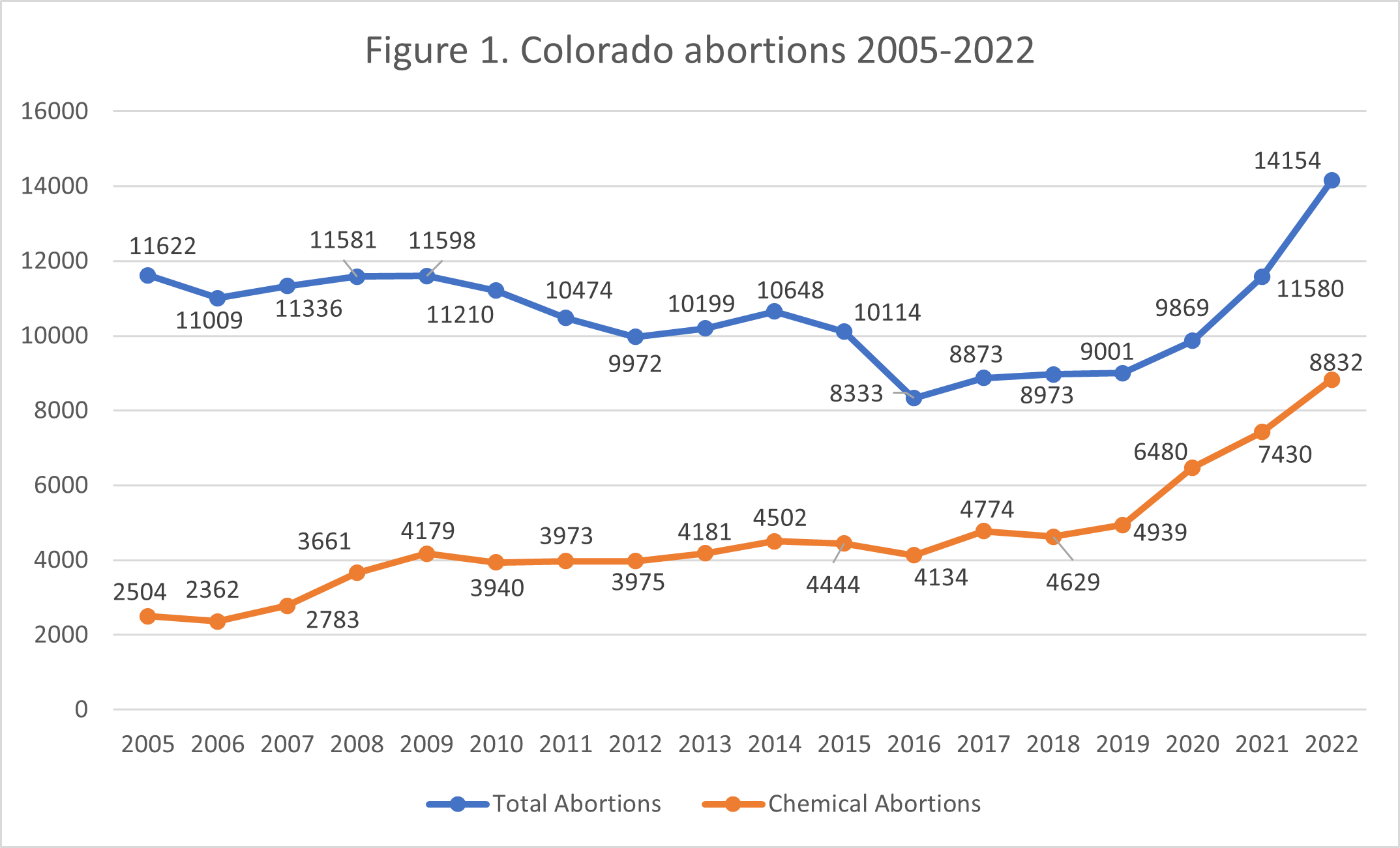
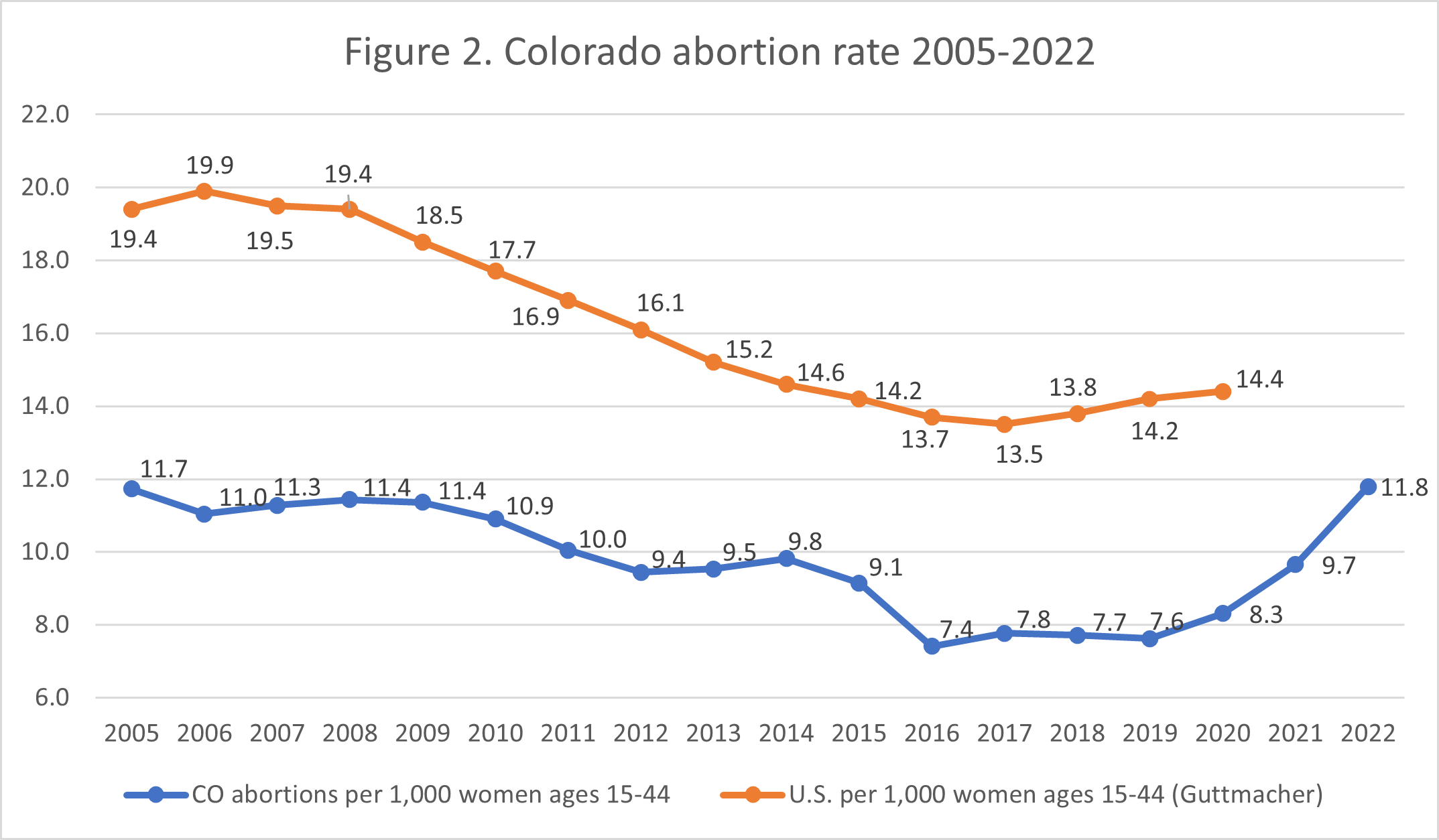
- National rates were calculated by Guttmacher Institute. Colorado rates were calculated by CLI using the following formula: (total number of abortions performed in Colorado ÷ number of resident women ages 15-44 [based on most recent population estimates]) x 1,000. Rates may differ slightly from previous CLI articles due to revised population estimates. Population estimates were obtained from CDC WONDER. Estimates for 2005-2009 are intercensal estimates of the July 1 resident population. Estimates for 2010-2019 are Vintage 2020 postcensal estimates of the July 1 resident population. Estimates for 2020-2022 are Vintage 2021 postcensal estimates of the July 1 resident population as the CDC has not yet released 2022 population estimates. Population estimates were produced by the U.S. Census Bureau and the National Center for Health Statistics.











